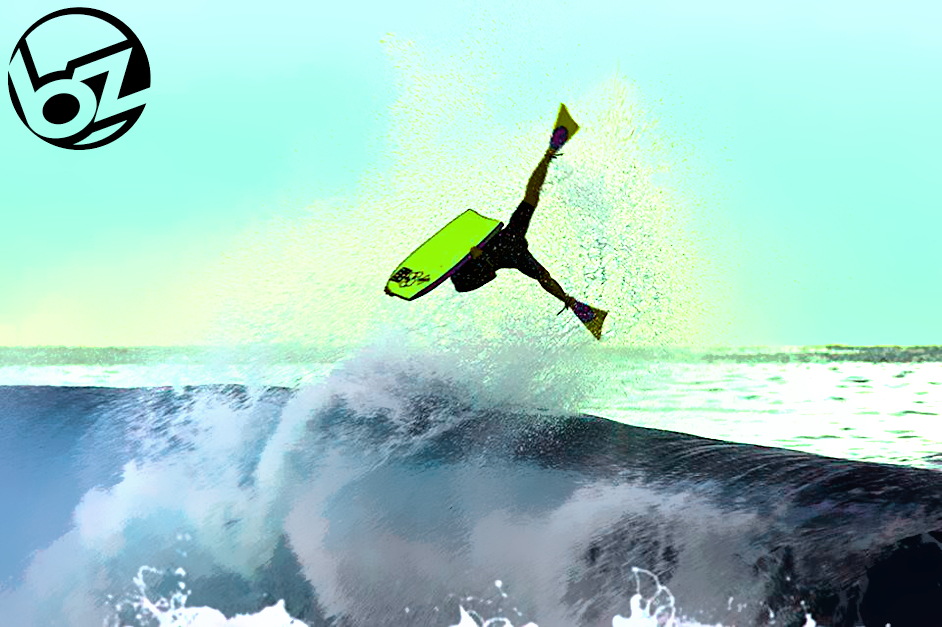Bodyboarding originates from an ancient form of riding waves on one’s belly. Polynesian people rode “alaia” (pronounced ah-lie-ah) boards either on their belly, knees, or feet (in rare instances). Alaia boards were generally made from the wood of Acacia koa and ranged in length and shape.[1] They are distinct from the modern stand-up surfboards in that they had no ventral fins.[2] Captain Cook was recorded seeing Hawaiian villagers riding such boards when he came to Hawaii in 1778. The boards he witnessed were about 3′ to 6′ and were ridden “prone” (on the belly) or on the knees. Alaia boards then evolved into the more modern “paipo” (pronounced pipe-oh) board. Paipo boards were either made of wood or fiberglass. Fiberglass boards usually had fins on the bottom.[3] Tom Morey hybridized this form of riding waves on one’s belly on a paipo to his craft of shaping stand-up surfboards.
On July 9, 1971, Tom Morey invented the modern bodyboard.
